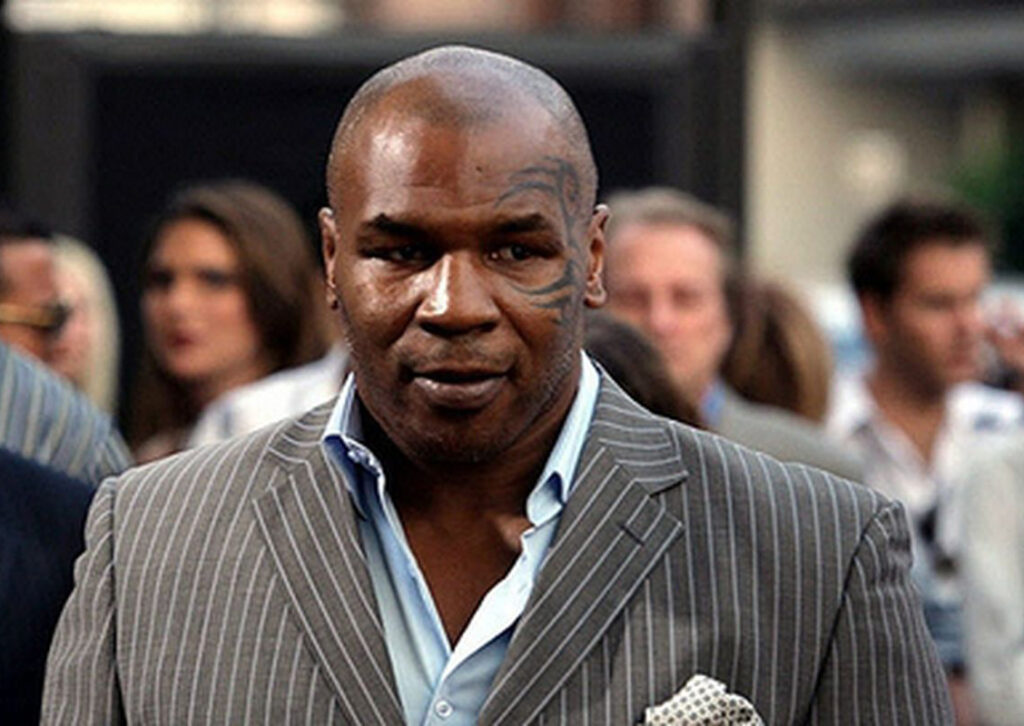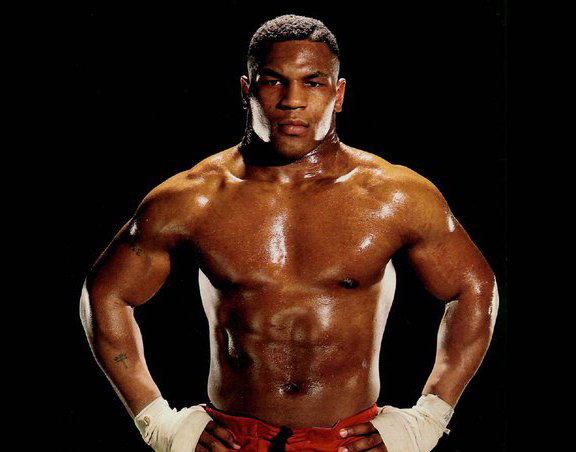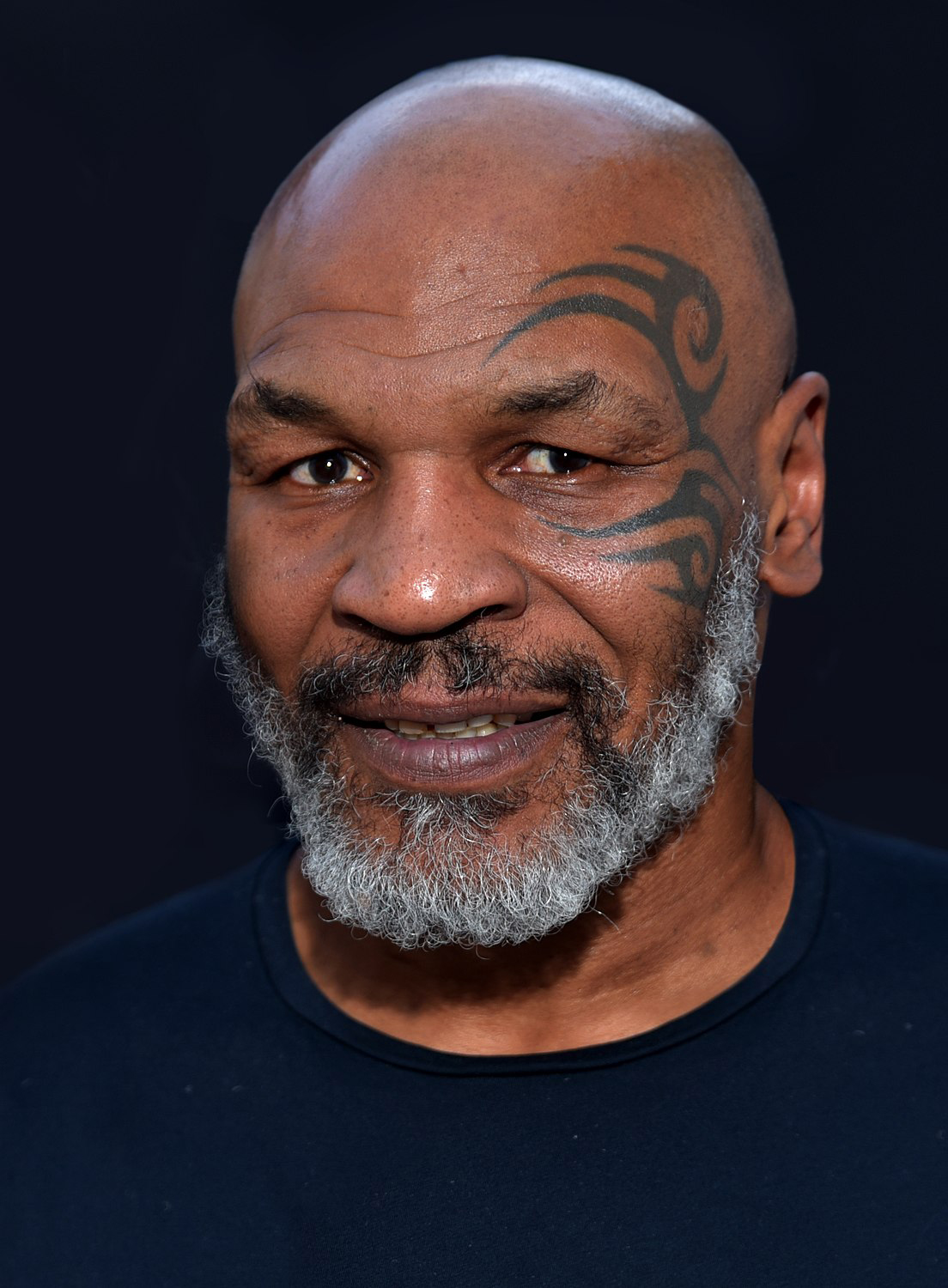Mike Tyson The Unstoppable Force of Boxing.
In the world of boxing, few names evoke as much fear, awe, and respect as Mike Tyson. From his turbulent upbringing to his meteoric rise and eventual comeback, Tyson’s life story is a testament to his indomitable spirit and unparalleled skills inside the ring. In this blog post, we delve into the captivating journey of “Iron” Mike Tyson, exploring his triumphs, challenges, and enduring impact on the sport of boxing.
The Early Years: A Rocky Road
Born on June 30, 1966, in Brooklyn, New York, Michael Gerard Tyson faced adversity from the start. Raised in a tough neighborhood, Tyson’s early life was marked by poverty, crime, and a series of brushes with the law. His introduction to boxing at a youth detention center was the turning point that would shape his destiny.
The Rise of a Phenom
Under the guidance of legendary trainer Cus D’Amato, Tyson honed his boxing skills with astonishing speed and power. His fierce determination and raw talent led to a professional debut at the age of 18 in 1985. Tyson’s ascent was nothing short of meteoric, as he bulldozed through opponents, often finishing fights in the first round. In 1986, he became the youngest heavyweight champion in history by defeating Trevor Berbick at just 20 years old.
Unmatched Dominance
Tyson’s ferocious fighting style, characterized by his relentless aggression and intimidating demeanor, struck fear into opponents long before they stepped into the ring. His signature move, the peek-a-boo style taught by D’Amato, allowed him to bob and weave while launching devastating counterattacks. Tyson’s dominance was highlighted by a series of swift knockouts and title defenses that solidified his status as a boxing phenomenon.
Undisputed Champion
In 1987, Tyson’s undisputed nature came to fruition when he became the WBC, WBA, and IBF heavyweight champion, holding all three major titles simultaneously. His reign was marked by a series of electrifying performances and an aura of invincibility that captured the imagination of sports fans worldwide.
The Downfall and Redemption
Despite his remarkable success, Tyson’s life took a downward spiral. Legal troubles, personal turmoil, and a stunning upset loss to Buster Douglas in 1990 dented his aura of invulnerability. The 1992 conviction for rape resulted in a prison sentence that halted his career. However, Tyson’s eventual release in 1995 marked the beginning of his redemption arc.
The Comeback Kid
Tyson’s comeback was marked by both triumphs and controversies. He regained the WBA title in 1996 and became the first heavyweight to hold the WBC, WBA, and IBF titles simultaneously. Yet, his controversial behavior, including biting a piece of Evander Holyfield’s ear during a rematch, cast a shadow over his achievements.
Legacy and Impact
Mike Tyson’s legacy extends beyond the boxing ring. His unapologetic authenticity and complex persona made him a cultural icon. His face tattoo and distinctive lisp became part of his identity. Tyson’s turbulent life story was adapted into the movie “The Hangover,” showcasing his crossover appeal.
Retirement and Reflection
Tyson retired from boxing in 2005, leaving a legacy that remains unmatched. In his post-fighting career, he has embarked on diverse ventures, including acting, hosting a podcast (“Hotboxin’ with Mike Tyson”), and even contemplating a return to boxing through exhibition matches.

Conclusion
Mike Tyson’s life is a roller coaster of triumphs, pitfalls, and redemption. His journey from a troubled upbringing to becoming the youngest heavyweight champion showcased his resilience, determination, and sheer talent. Tyson’s impact on the boxing world and popular culture is undeniable, as he remains an enduring figure who embodies the raw power and unyielding spirit of a true fighter.

Facts about :
- Mike Tyson was born on June 30, 1966, in Brooklyn, New York, USA.
- Raised in a tough neighborhood, Tyson faced numerous challenges growing up.
- He was introduced to boxing at a youth detention center, where he met Bobby Stewart, a counselor and former boxer.
- Cus D’Amato, a renowned boxing trainer, became Tyson’s mentor and father figure.
- Tyson’s amateur boxing record was an impressive 44 wins with 0 losses.
- He turned professional at the age of 18 in 1985.
Meteoric Rise:
- Tyson’s first professional fight took place on March 6, 1985, and he won by knockout.
- He secured his first 19 victories by knockout, establishing his reputation as a knockout artist.
- In 1986, Tyson’s first-round knockout of Jesse Ferguson gained him widespread attention.
- He won his first title, the WBC heavyweight championship, in 1986 by defeating Tony Tucker.
Youngest Heavyweight Champion:
- Tyson became the youngest heavyweight champion in history on November 22, 1986, at 20 years old.
- He defeated Trevor Berbick in just 2 minutes and 35 seconds.
- Tyson’s undisputed nature came to fruition when he held the WBC, WBA, and IBF titles simultaneously.
Dominance Inside the Ring:
- Tyson was known for his aggressive peek-a-boo boxing style, utilizing quick head movement and devastating counterattacks.
- His explosive power resulted in many opponents being knocked out in the first round.
- Tyson’s fight against Michael Spinks in 1988 lasted only 91 seconds, ending with a knockout victory.
- He successfully defended his titles multiple times against opponents like Larry Holmes and Frank Bruno.
Challenges and Controversies:
- Tyson’s marriage to actress Robin Givens was highly publicized and ended in divorce in 1989.
- His mentor Cus D’Amato passed away in 1985, impacting Tyson’s personal and professional life.
- Tyson’s loss to Buster Douglas in 1990 shocked the boxing world and was considered one of the greatest upsets in sports history.
Legal Troubles and Imprisonment:
- In 1992, Tyson was convicted of rape and sentenced to six years in prison.
- He served three years at the Indiana Youth Center and was released in 1995.
Comeback and Championship Regained:
- Tyson made a triumphant return to boxing in 1995, quickly re-establishing himself as a formidable contender.
- He regained the WBA heavyweight title in 1996 by defeating Bruce Seldon in just 109 seconds.
- Tyson became the first heavyweight to hold the WBC, WBA, and IBF titles simultaneously in 1996.
Controversies and Memorable Fights:
- Tyson’s rematch with Evander Holyfield in 1997 resulted in a disqualification after he bit off a piece of Holyfield’s ear.
- The “Bite Fight” incident led to Tyson’s suspension and a significant fine.
Later Career and Retirement:
- Tyson’s later career was marked by various ups and downs, including losses to Lennox Lewis and Kevin McBride.
- He officially retired from professional boxing in 2006 with a record of 50 wins, 6 losses, and 2 no-contests.
- Tyson’s boxing style and intensity left an indelible mark on the sport.
Personal Life and Comebacks:
- Tyson has been open about his struggles with substance abuse and mental health.
- He has made several comeback attempts, participating in exhibition matches and training regimens.
Acting and Entertainment:
- Tyson made appearances in movies and TV shows, including a cameo in “The Hangover” film series.
- He starred in a one-man show, “Mike Tyson: Undisputed Truth,” sharing his life story with audiences.
Family and Relationships:
- Tyson has been married multiple times and has several children.
- His daughter Exodus tragically passed away in 2009 due to a household accident.
Podcast and Business Ventures:
- Tyson hosts the podcast “Hotboxin’ with Mike Tyson,” where he discusses various topics with guests.
- He has been involved in business ventures, including cannabis-related products and merchandise.
Pop Culture Icon:
- Tyson’s face tattoo, distinct lisp, and larger-than-life persona have made him a pop culture icon.
Inducted into the Hall of Fame:
- In 2011, Tyson was inducted into the International Boxing Hall of Fame.
Training and Fitness:
- Tyson’s training regimen was known for its intensity, including grueling sparring sessions and physical conditioning.
Philanthropy and Giving Back:
- Tyson has been involved in charitable initiatives, including supporting children’s hospitals and causes.
Influential Quotes:
- Tyson’s quotes, such as “Everybody has a plan until they get punched in the mouth,” have become legendary.
Documentaries and Biographies:
- Numerous documentaries and biographies have been made about Tyson’s life and career.
Legacy and Impact:
- Tyson’s impact on boxing, both positive and controversial, cannot be overstated.
- His legacy continues to be discussed in the context of boxing history.
Public Speaking and Motivation:
- Tyson has engaged in public speaking engagements, sharing insights and lessons from his life.
Cultural Impact:
- Tyson’s persona has inspired references in music, movies, and other forms of media.
Authenticity and Vulnerability:
- Tyson’s willingness to discuss his struggles and challenges has made him a relatable figure to many.
Physical Attributes:
- Tyson’s height of around 5 feet 10 inches and powerful build contributed to his boxing style.
Evolution of Boxing Techniques:
- Tyson’s peek-a-boo style was a variation of defensive boxing methods.
Fan Engagement:
- Tyson remains connected with fans through social media and public appearances.
Tribulations and Triumphs:
- Tyson’s life is a story of rising above adversity and finding success.
Cultural Phenomenon:
- His fights were global events that captured the world’s attention.
Public Persona:
- Tyson’s persona was both fearsome and captivating, drawing audiences to his fights.
Unique Achievements:
- He achieved many records, including the fastest victories in heavyweight boxing.
Mentorship and Legacy of Cus D’Amato:
- Tyson often speaks about the profound impact that his mentor Cus D’Amato had on his life and career.
The nickname “Iron” Mike:
- Tyson’s nickname, “Iron Mike,” reflects his toughness and resilience.
Early Knockouts:
- Tyson’s explosive power led to numerous early knockouts in his fights.
Punch Accuracy:
- His precise and powerful punches were a hallmark of his boxing style.
Cultural Significance:
- Tyson’s fights were cultural moments that transcended the sport.
Public Interest:
- His fights generated enormous pay-per-view buys and gate receipts.
Undisputed Nature:
- Tyson’s dominance earned him the moniker “The Baddest Man on the Planet.”
Charitable Efforts:
- Tyson has been involved in charity work, including donations to various causes.
Physical Training:
- Tyson’s training incorporated a mix of boxing drills, strength training, and cardiovascular exercises.
Endorsements and Commercial Deals:
- Tyson endorsed various products and brands during his career.
Financial Ups and Downs:
- Despite earning significant sums, Tyson faced financial challenges.
Public Controversies:
- Tyson’s controversial moments included legal issues and confrontations outside the ring.
Trained by Legendary Coaches:
- In addition to Cus D’Amato, Tyson was also trained by Kevin Rooney and Teddy Atlas.
Famous Fights:
- Tyson’s fights against Evander Holyfield, Lennox Lewis, and others are part of boxing history.
Media Attention:
- Tyson’s fame attracted media attention, both positive and critical.
Health and Wellness Advocacy:
- In recent years, Tyson has advocated for physical and mental health awareness.
Physical and Mental Toughness:
- Tyson’s ability to overcome challenges showcased his resilience.
Crossover Appeal:
- Tyson’s appearances in entertainment demonstrated his appeal beyond boxing.
Global Reach:
- His fame extended to international audiences, making him a global sports figure.
Comedic Appearances:
- Tyson’s comedic roles showcased his sense of humor and versatility.
Personal Transformation:
- Tyson’s personal journey from troubled youth to successful athlete is inspiring.
Documentary “Tyson”:
- The 2008 documentary “Tyson” offered an intimate look at his life and career.
Popularity Among Athletes:
- Tyson’s influence extends to athletes in various sports who admire his skills.
Media Coverage:
- Tyson’s life story has been explored in books, articles, and TV features.
Famous Knockouts:
- Tyson’s knockout victories are legendary moments in boxing history.
Cultural Symbolism:
- Tyson represents a blend of athleticism, charisma, and complexity.
Motivational Speaker:
- Tyson’s speeches often emphasize the importance of self-belief and determination.
Family Support:
- Tyson’s family has been both a source of struggle and strength in his life.
Innovative Training Techniques:
- Tyson’s training incorporated unconventional methods to enhance his skills.
Impact on Sports Commentary:
- Tyson’s fights sparked intense discussions and analysis by sports commentators.
Legacy of Champions:
- Tyson’s legacy adds to the rich history of heavyweight boxing champions.
Ring Presence:
- His ring walkouts and pre-fight demeanor were part of his mystique.
Post-Retirement Engagement:
- Tyson remains engaged with the sport through commentating and events.
Continued Cultural Relevance:
- Tyson remains a recognized figure in popular culture.
Resilience and Redemption:
- Tyson’s ability to bounce back from setbacks is a testament to his character.
Legendary Sparring Partners:
- Tyson sparred with notable fighters like Larry Holmes and Greg Page.
Sports Psychology Impact:
- Tyson’s aggressive psychological approach to boxing influenced his opponents.
Public Influence:
- Tyson’s influence extends beyond sports to areas like fashion and music.
Legacy in Video Games:
- Tyson’s image was featured in the popular video game “Mike Tyson’s Punch-Out!!”
Physical Attributes:
- Tyson’s agility and power combination made him a fearsome opponent.
Media Interviews and Insights:
- Tyson’s candid interviews provide insights into his mindset and experiences.
Fan Base Diversity:
- Tyson’s appeal transcends age, nationality, and background.
Hall of Fame Recognition:
- His induction into the Hall of Fame cements his place in boxing history.
Evolving Perspectives:
- Tyson’s story continues to evolve as he shares new insights and experiences.

Networth :
As of August 2023, Mike Tyson’s net worth is estimated to be $10 million. This is a far cry from his peak net worth of $300 million in the late 1980s and early 1990s. Tyson lost most of his wealth due to a combination of factors, including lavish spending, poor financial management, and legal troubles.
Tyson made a lot of money during his boxing career. He earned $27 million for his fight against Michael Spinks in 1988, which was the highest payday for a boxer at the time. He also earned a significant amount of money from endorsements, including deals with Pepsi, Toyota, and Nintendo.
However, Tyson also spent a lot of money. He bought expensive cars, houses, and jewelry. He also gambled heavily and gave away large sums of money to friends and family. In addition, Tyson was involved in several legal troubles, which cost him millions of dollars in legal fees.
Tyson filed for bankruptcy in 2003. He was reportedly $23 million in debt at the time. However, he has since been able to rebuild his finances. He has earned money from boxing comeback fights, as well as from appearances in movies and television shows. He has also launched his own business ventures, including a cannabis company and a podcast.
It is unlikely that Tyson will ever regain his peak net worth. However, he is now in a much better financial position than he was in the early 2000s. He is still a popular figure and he is able to generate income from a variety of sources.
More articles :

